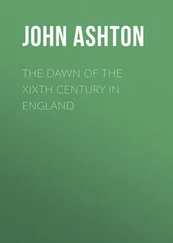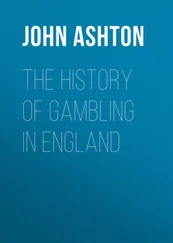John Ashton - The Fleet. Its Rivers, Prison, and Marriages
Здесь есть возможность читать онлайн «John Ashton - The Fleet. Its Rivers, Prison, and Marriages» — ознакомительный отрывок электронной книги совершенно бесплатно, а после прочтения отрывка купить полную версию. В некоторых случаях можно слушать аудио, скачать через торрент в формате fb2 и присутствует краткое содержание. Жанр: foreign_antique, foreign_prose, на английском языке. Описание произведения, (предисловие) а так же отзывы посетителей доступны на портале библиотеки ЛибКат.
- Название:The Fleet. Its Rivers, Prison, and Marriages
- Автор:
- Жанр:
- Год:неизвестен
- ISBN:нет данных
- Рейтинг книги:4 / 5. Голосов: 1
-
Избранное:Добавить в избранное
- Отзывы:
-
Ваша оценка:
- 80
- 1
- 2
- 3
- 4
- 5
The Fleet. Its Rivers, Prison, and Marriages: краткое содержание, описание и аннотация
Предлагаем к чтению аннотацию, описание, краткое содержание или предисловие (зависит от того, что написал сам автор книги «The Fleet. Its Rivers, Prison, and Marriages»). Если вы не нашли необходимую информацию о книге — напишите в комментариях, мы постараемся отыскать её.
The Fleet. Its Rivers, Prison, and Marriages — читать онлайн ознакомительный отрывок
Ниже представлен текст книги, разбитый по страницам. Система сохранения места последней прочитанной страницы, позволяет с удобством читать онлайн бесплатно книгу «The Fleet. Its Rivers, Prison, and Marriages», без необходимости каждый раз заново искать на чём Вы остановились. Поставьте закладку, и сможете в любой момент перейти на страницу, на которой закончили чтение.
Интервал:
Закладка:
We get a glimpse of prehistoric London, and the valley of the Fleet, in Gough's "British Topography," vol. i. p. 719 (ed. 1780). Speaking of John Conyers, "apothecary, one of the first Collectors of antiquities, especially those relating to London, when the City was rebuilding… He inspected most of the gravel-pits near town for different sorts and shapes of stones. In one near the sign of Sir J. Oldcastle, about 1680, he discovered the skeleton of an elephant, which he supposed had lain there only since the time of the Romans, who, in the reign of Claudius, fought the Britons near this place, according to Selden's notes on the Polyolbion. In the same pit he found the head of a British spear of flint, afterwards in the hands of Dr. Charlett, and engraved in Bagford's letter." We, now-a-days, with our more accurate knowledge of Geology and Palæontology, would have ascribed a far higher ancestry to the "elephant."
As a matter of course, a little river like the Fleet must have become the receptacle of many articles, which, once dropped in its waters, could not be recovered; so that it is not surprising to read in the Mirror of March 22, 1834 (No. 653, p. 180), an account of antiquarian discoveries therein, which, if not archæologically correct, is at least interesting.
"In digging this Canal between Fleet Prison and Holborn Bridge, several Roman utensils were lately discovered at the depth of 15 feet; and a little deeper, a great quantity of Roman Coins, in silver, brass, copper, and all other metals except gold. Those of silver were ring money, of several sizes, the largest about the bigness of a Crown, but gradually decreasing; the smallest were about the size of a silver Twopence, each having a snip at the edge. And at Holborn Bridge were dug up two brazen lares, or household gods, about four inches in length, which were almost incrusted with a petrified matter: one of these was Bacchus, and the other Ceres; but the coins lying at the bottom of the current, their lustre was in a great measure preserved, by the water incessantly washing off the oxydizing metal. Probably the great quantity of coin found in this ditch, was thrown in by the Roman inhabitants of this city for its preservation at the approach of Boadicæa at the head of her army: but the Roman Citizens, without distinction of age or sex, being barbarously murdered by the justly enraged Britons, it was not discovered till this time.
"Besides the above-mentioned antiquities, several articles of a more modern date were discovered, as arrow-heads, scales, seals with the proprietors' names upon them in Saxon characters; spur rowels of a hand's breadth, keys and daggers, covered over with livid rust; together with a considerable number of medals, with crosses, crucifixes, and Ave Marias engraven thereon."
A paper was read, on June 11, 1862, to the members of the British Archæological Association, by Mr. Ganston, who exhibited various relics lately recovered from the bed of the river Fleet, but they were not even of archæological importance – a few knives, the earliest dating from the fifteenth century, and a few knife handles.
Previously, at a meeting of the same Society, on December 9, 1857, Mr. C. H. Luxmore exhibited a green glazed earthenware jug of the sixteenth century, found in the Fleet.
And, before closing this antiquarian notice of the Fleet, I cannot but record some early mention of the river which occur in the archives of the Corporation of the City of London: —
(17 Edward III., A.D. 1343, Letter-book F, fol. 67.) "Be it remembered that at the Hustings of Common Pleas, holden on the Monday next before the Feast of Gregory the Pope, in the 17th year of the reign of King Edward, after the Conquest, the Third, Simon Traunceys, Mayor, the Aldermen and the Commonalty, of the City of London, for the decency and cleanliness of the same city, granted upon lease to the butchers in the Parish of St. Nicholas Shambles, in London, a piece of land in the lane called 'Secollane' (sea coal), neare to the water of Flete, for the purpose of there, in such water, cleansing the entrails of beasts. And upon such piece of land the butchers aforesaid were to repair a certain quay at their charges, and to keep the same in repair; they paying yearly to the Mayor of London for the time being, at the Feast of our Lord's Nativity, one boar's head." 10 10 "Memorials of London and London Life in the Thirteenth, Fourteenth, and Fifteenth Centuries," by H. J. Riley, 1868, p. 214.
(31 Edward III., A.D. 1357, Letter-book G, fol. 72.) "Also, it is ordered, that no man shall take, or cause to be carried, any manner of rubbish, earth, gravel, or dung, from out of his stables or elsewhere, to throw, and put the same into the rivers of Thames and Flete, or into the Fosses around the walls of the City: and as to the dung that is found in the streets and lanes, the same shall be carried and taken elsewhere out of the City by carts, as heretofore; or else by the raykers 11 11 The street sweepers.
to certain spots, that the same may be put into the dongebotes , 12 12 Dung boats.
without throwing anything into the Thames; for saving the body of the river, and preserving the quays, such as Dowegate, Quenhethe, and Castle Baynards, (and) elsewhere, for lading and unlading; as also, for avoiding the filthiness that is increasing in the water, and upon the banks of the Thames, to the great abomination and damage of the people. And, if any one shall be found doing the Contrary hereof, let him have the prison for his body, and other heavy punishment as well, at the discretion of the Mayor and of the Aldermen." 13 13 See Riley, p. 299.
(7 Henry V. A.D. 1419, Journal 1, fol. 61.) "It is granted that the risshbotes 14 14 This was probably because the rushes were spilt in the river. At that time the house-floors were strewn with rushes, which were brought to London in "Rush boats;" and an ordinance, temp. 4 Henry V., provides that "all rushes in future, laden in boats or skiffs, and brought here for sale, should be sold by the cart-load, as from of old had been wont to be done. And that the same cart-loads were to be made up within the boats and skiffs in which the said rushes are brought to the City, and not upon the ground, or upon the wharves, walls, or embankments of the water of Thames, near or adjacent to such boats or skiffs; under a heavy penalty upon the owner or owners of such boats, skiffs, and rushes, at the discretion of the Mayor and Aldermen."
at the Flete and elsewhere in London shall be taken into the hands of the Chamberlain; and the Chamberlain shall cause all the streets to be cleansed." 15 15 See Riley, p. 675.
The northern heights of London, the "ultima Thule" of men like Keats, and Shelley, abound in springs, which form the bases of several little streams, which are fed on their journey to their bourne, the Thames (to which they act as tributaries), by numerous little brooklets and rivulets, which help to swell their volume. On the northern side of the ridge which runs from Hampstead to Highgate, birth is given to the Brent, which, springing from a pond in the grounds of Sir Spencer Wells, is pent up in a large reservoir at Hendon, and finally debouches into the Thames at Brentford, where, from a little spring, which it is at starting, it becomes so far a "fleet" as to allow barges to go up some distance.
On the southern side of the ridge rise the Tybourne, and the Westbourne. The former had its rise in a spring called Shepherd's Well, in Shepherd's Fields, Hampstead, which formed part of the district now known as Belsize Park and FitzJohn's Avenue, which is the finest road of private houses in London. Shepherd's Well is depicted in Hone's "Table Book," pp. 381, 2, and shows it as it was over fifty years since. Alas! it is a thing of the past; a railway tunnel drained the spring, and a mansion, now known as The Conduit Lodge, occupies its site. It meandered by Belsize House, through St. John's Wood, running into Regent's Park, where St. Dunstan's now is, and, close to the Ornamental Water, it was joined by a little rivulet which sprang from where now, is the Zoological Gardens. It went across Marylebone Road, and, as nearly as possible, Marylebone Lane shows its course; then down South Molton Street, passing Brook Street, and Conduit Street, by Mayfair, to Clarges Street, across Oxford Street and into a pond in the Green Park called the Ducking Pond, which was possibly used as a place of punishment for scolds, or may have been an ornamental pond for water-fowl. Thence it ran in front of Buckingham Palace, where it divided, which was the cause of its name. Twy, or Teo (double), and Bourne, Brook – one stream running into the Thames west of Millbank, doing duty by the way in turning the Abbey Mill (whence the name), and the other debouching east of Westminster Bridge, thus forming the Island of Thorns, or Thorney Isle, on which Edward the Confessor founded his abbey, and the City of Westminster.
Читать дальшеИнтервал:
Закладка:
Похожие книги на «The Fleet. Its Rivers, Prison, and Marriages»
Представляем Вашему вниманию похожие книги на «The Fleet. Its Rivers, Prison, and Marriages» списком для выбора. Мы отобрали схожую по названию и смыслу литературу в надежде предоставить читателям больше вариантов отыскать новые, интересные, ещё непрочитанные произведения.
Обсуждение, отзывы о книге «The Fleet. Its Rivers, Prison, and Marriages» и просто собственные мнения читателей. Оставьте ваши комментарии, напишите, что Вы думаете о произведении, его смысле или главных героях. Укажите что конкретно понравилось, а что нет, и почему Вы так считаете.












